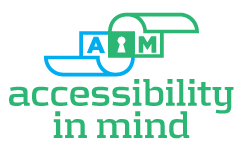Question: There are plenty of interpretations of the Section 508 regulations. How do I know my organization is creating accessible tables?
Answer: An Accessibility Forum with over 960 individuals from more than 600 companies, associations for people with disabilities, research and standards institutes, and government agencies from throughout the US and Canada created a "Quick Reference Guide", which lists every Section 508 provision, defines terms, explains the provision, and answers, "How can I tell if this provision is met?" It may not be the law of the land, but it is very unlikely that a judge would over-rule their interpretations with their own. Below is their guidance regarding tables; they refer to HTML, but the same holds true for PDFs.
Note that 1194.22(g) specifies only that row and column headers be "identified"; in a PDF the means <TH> and <TD> tags applied appropriately. 1194.22(h) deals with what may may considered "complex"tables.
Additional information can be found here:
http://www.w3.org/WAI/tutorials/tables/ ; note that the examples show ID tags added to the markup, but the examples are for small tables. This may not be functionally practical for large, complex tables. Some tables may not be practically accessible for use with assistive technology.
Source:
http://www.buyaccessible.gov/content/quick-reference-guide#1194.22
1194.22 (g) Row and column headers shall be identified for data tables.
What does this requirement mean?
Terms and Definitions:
data tables - tables used to represent tabular information.
Assumptions:
Assume this requirement does not apply to tables used strictly for layout purposes, and assume that informed humans can reasonably consistently judge whether a table is used strictly for layout.
How can I tell if this requirement is met?
Identify all uses of a data table. Establish that the table is a data table which needs column and / or row headers for understanding its contents.
- Inspect web content source to help identify appropriate data table headers. Some tips for inspection of HTML to help identify appropriate identification of data table headers:
- Column headers: the first data row of the table is composed of <th> elements instead of <td> elements.
- Row headers: the first cell of each data row is a element instead of a <td> element.Note: Tables that are used strictly for layout should avoid this markup.
- Apply AT to make sure row and column headers are identified. Note the use of AT as a measurement method is limited by the adequacy of algorithms and heuristic methods of the specific AT tool used. It can be used to identify problems with specific AT-E&IT interoperability but it cannot predict results with other AT or with other versions of the same AT, OS, application or accessibility architecture. AT should include the full range e.g. screen readers, screen magnifiers, alternate input devices, etc
Note: Satisfying this requirement supports interoperability with assistive technology, such as screen readers and magnifiers, which must be able to interpret data tables.
Where can I get additional information?
- Guide to the Section 508 Standards for Electronic and Information Technology, Web-based Intranet and Internet Information and Applications (1194.22), Updated: June 21, 2001, http://www.access-board.gov/sec508/guide/1194.22.htm#(g)
- The W3C WAI Web Content Accessibility Guidelines 1.0 Checkpoint 5.1 provides further guidance and techniques for this requirement athttp://www.w3.org/TR/WCAG10/#tech-table-headers
- W3C WAI User Agent Accessibility Guidelines 1.0 techniques for browsers, etc. to handle HTML tables: http://www.w3.org/TR/UAAG10-TECHS/topics.html#table-techniques
- The W3C WAI maintains a listing of various tool and services available for evaluation and repair of web pages for web content accessibility, athttp://www.w3.org/WAI/ER/existingtools.html
- IBM Web accessibility checklist version 5.1, checkpoint 1.3e
http://www-03.ibm.com/able/guidelines/web/accessweb.html
1194.22 (h) Markup shall be used to associate data cells and header cells for data tables that have two or more logical levels of row or column headers.
What does this requirement mean?
Terms and Definitions:
data tables - tables used to represent tabular information.
Assumptions: Assume that informed humans can reasonably consistently judge whether the markup adequately reflects the table row and column headers.
How can I tell if this requirement is met?
Identify all uses of a data table that have two or more logical levels.
- Inspect web content source to help identify appropriate multi-level data table headers. Are row and column headers associated with each data cell?
- Inspect the HTML find appropriate identification of multi-level data table headers by looking for
various combinations of the <thead>, <col>, <colgroup>, and <th> elements,
and "axis", "id", "scope", and "headers" attributes.
Note: Tables that are used strictly for layout should avoid this markup.
- Apply AT to make sure row and column headers are identified. Note the use of AT as a measurement method is limited by the adequacy of algorithms and heuristic methods of the specific AT tool used. It can be used to identify problems with specific AT-E&IT interoperability but it cannot predict results with other AT or with other versions of the same AT, OS, application or accessibility architecture. AT should include the full range e.g. screen readers, screen magnifiers, alternate input devices, etc
Note: Satisfying this requirement supports interoperability with assistive technology, such as screen readers and magnifiers, which must be able to interpret data tables.
Where can I get additional information?
- Guide to the Section 508 Standards for Electronic and Information Technology, Web-based Intranet and Internet Information and Applications (1194.22), Updated: June 21, 2001, http://www.access-board.gov/sec508/guide/1194.22.htm#(h)
- The W3C WAI Web Content Accessibility Guidelines 1.0 Checkpoint 5.2 provides further guidance and techniques for this requirement athttp://www.w3.org/TR/WCAG10/#tech-table-structure
- W3C WAI User Agent Accessibility Guidelines 1.0 techniques for browsers, etc. to handle HTML tables: http://www.w3.org/TR/UAAG10-TECHS/topics.html#table-techniques
- The W3C WAI maintains a listing of various tool and services available for evaluation and repair of web pages for web content accessibility, athttp://www.w3.org/WAI/ER/existingtools.html
- IBM Web accessibility checklist version 5.1, checkpoint 1.3e
http://www-03.ibm.com/able/guidelines/web/accessweb.html

